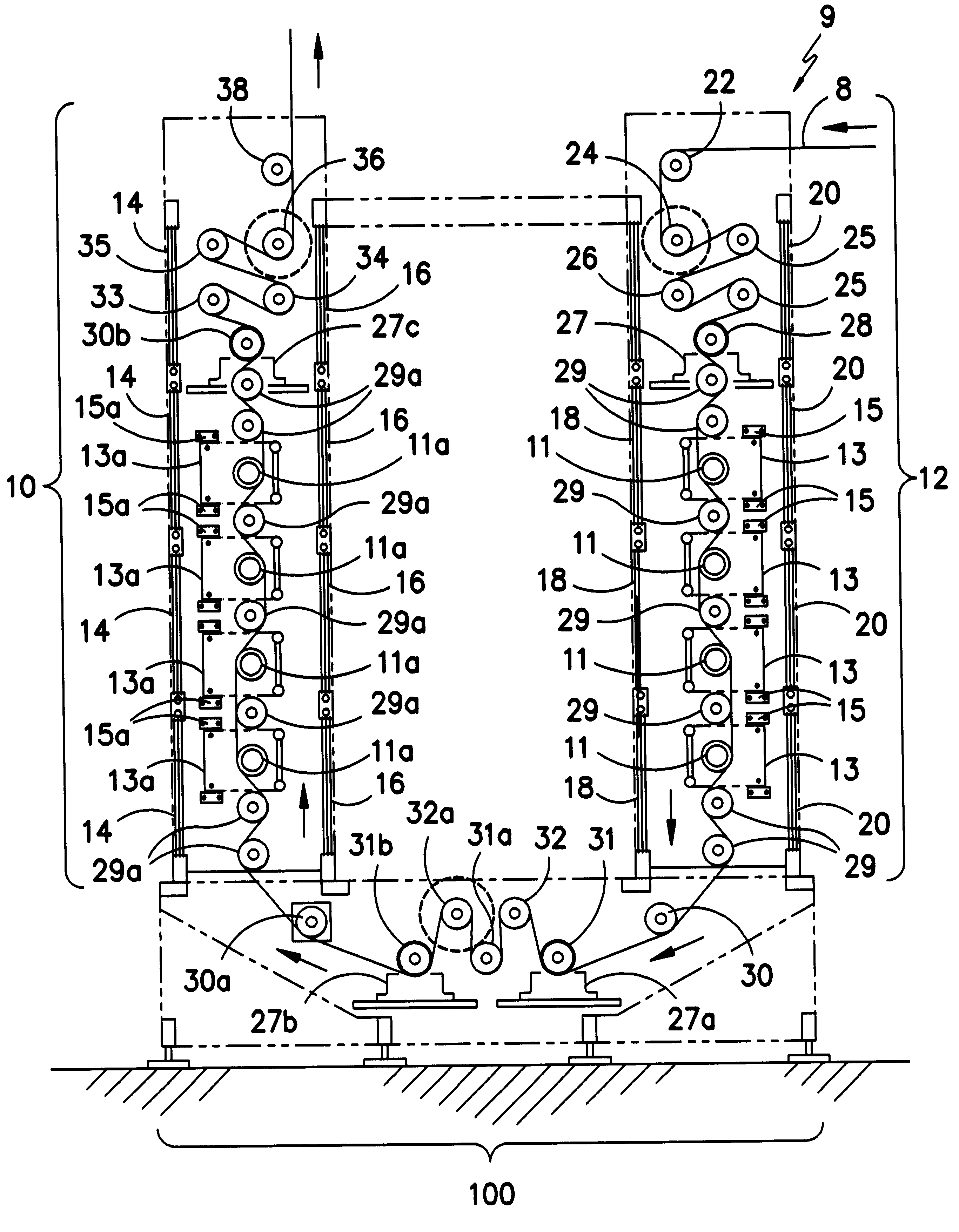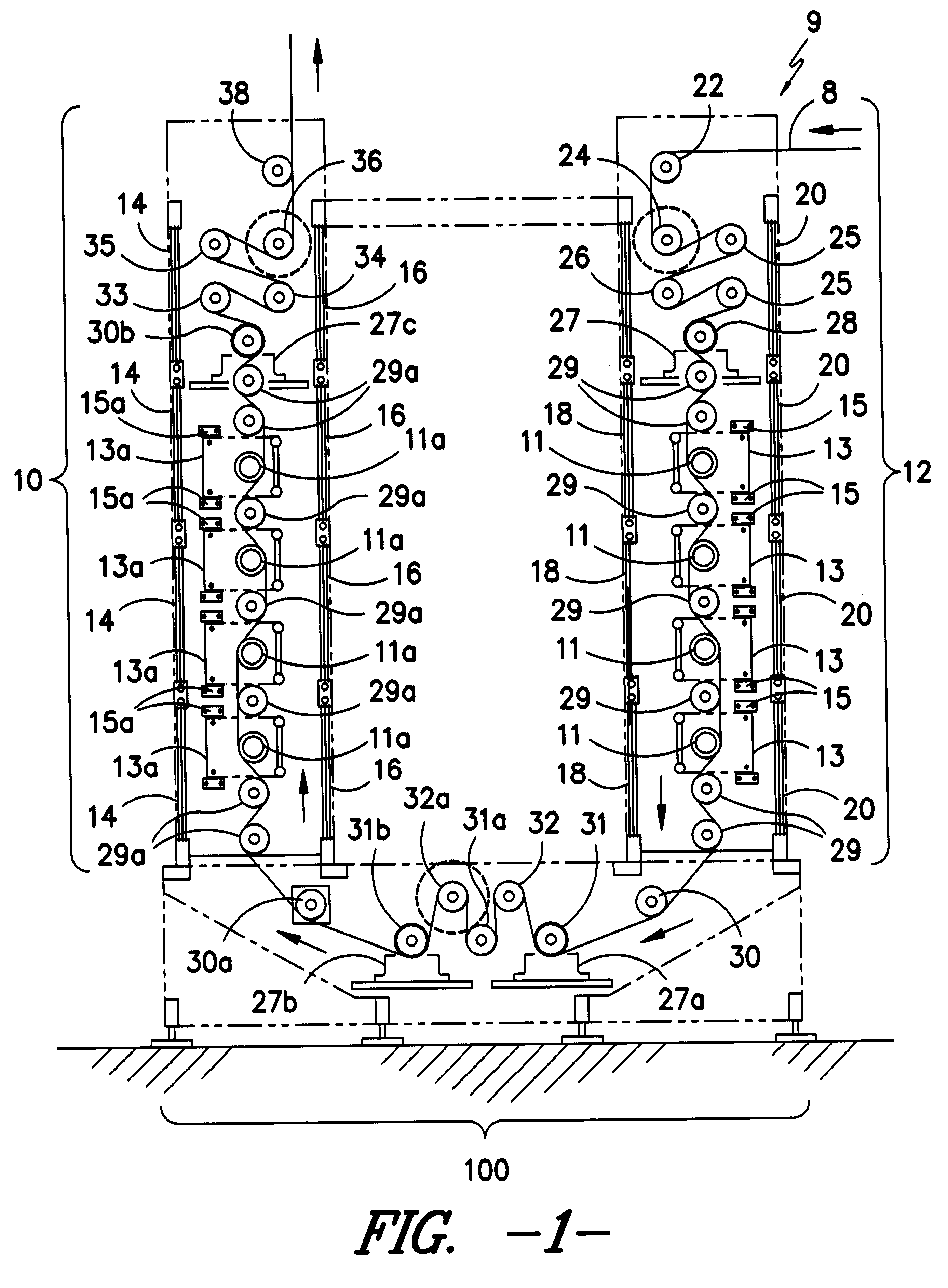Face finishing of cotton-containing fabrics containing immobilized fibers
a technology of immobilized fibers and cotton, applied in weaving, lighting and heating apparatus, drying machines with progressive movements, etc., can solve the problems of no prior teaching nor fair suggestion within, relatively long piles, and certain amounts of napping simultaneously, so as to enhance subsequent fabric processing and strengthen the effect of strength
- Summary
- Abstract
- Description
- Claims
- Application Information
AI Technical Summary
Benefits of technology
Problems solved by technology
Method used
Image
Examples
Embodiment Construction
In order to improve the hand of fabrics in a manner which is consistent with warm weather wear, the constituent fibers must be treated in a manner which provides a consistently short pile, so that a stagnant layer of insulating air is not trapped at the fabric surface. It has been found that, by first immobilizing the fibers constituting the fabric with a temporary coating, followed by an abrasive treatment of the fabric surface, and then removal of the temporary coating, a fabric of unique aesthetic and practical characteristics is obtained. Compared to a fabric which has been sanded or napped, a fabric treated by the present inventive method is cooler to the touch, smoother to the hand, and dramatically more resistant to pilling. To understand how these advantageous characteristics are obtained, it is useful to compare the action of card wire on a film of polyester (e.g., Mylar.TM.) to the action of the wire on a polyester fabric. When card wire is dragged across a Mylar.TM. film ...
PUM
| Property | Measurement | Unit |
|---|---|---|
| Fraction | aaaaa | aaaaa |
| Fraction | aaaaa | aaaaa |
| Percent by mass | aaaaa | aaaaa |
Abstract
Description
Claims
Application Information
 Login to View More
Login to View More - R&D
- Intellectual Property
- Life Sciences
- Materials
- Tech Scout
- Unparalleled Data Quality
- Higher Quality Content
- 60% Fewer Hallucinations
Browse by: Latest US Patents, China's latest patents, Technical Efficacy Thesaurus, Application Domain, Technology Topic, Popular Technical Reports.
© 2025 PatSnap. All rights reserved.Legal|Privacy policy|Modern Slavery Act Transparency Statement|Sitemap|About US| Contact US: help@patsnap.com


